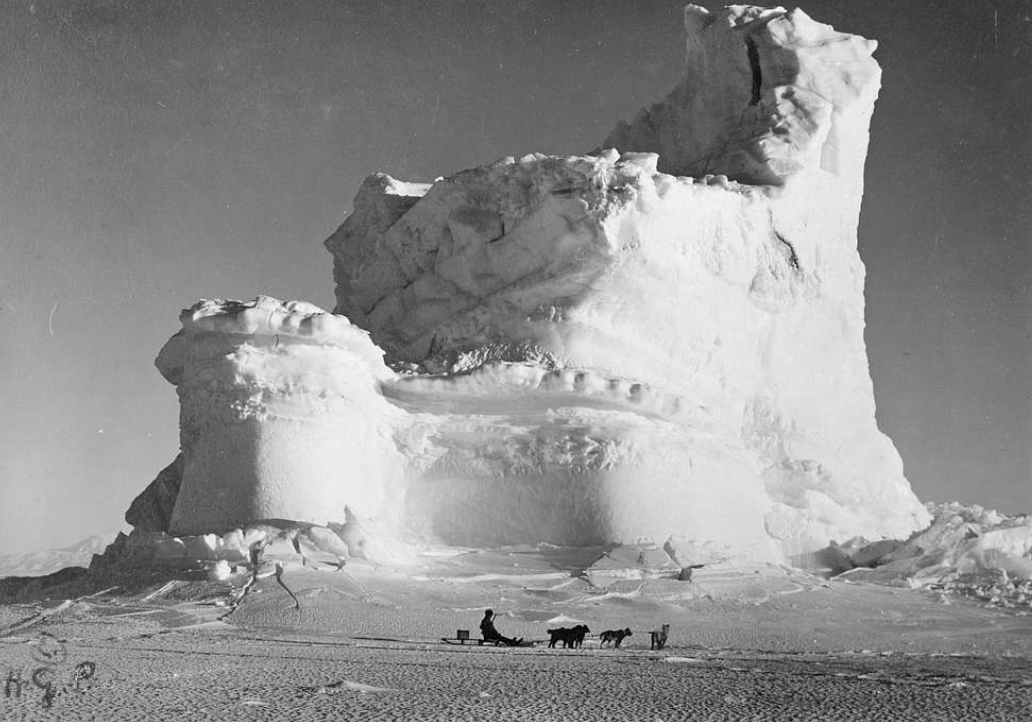1019: The Roof at the Bottom of the World:2of2: Discovering the Transantarctic MountainsHardcover – Illustrated, November 15, 2011.by Edmund Stump (Author)

Photo: No known restrictions on publication.1922.Photograph shows a man on a dogsled in the foreground and a castle-shaped mountain of ice in the background, during the British Antarctic Expedition. J181333 U.S. Copyright Office. Title from item. Alternate title from: The Great White South... / by Herbert G. Ponting, F.R.G.S. New York : Robert M. McBride & Co., 1922, opp. p. 171. Copyright 1913 May 12, by Herbert G. Ponting. Published in: The Great White South... / by Herbert G. Ponting, F.R.G.S. New York : Robert M. McBride & Co., 1922. http://JohnBatchelorShow.com/contact http://JohnBatchelorShow.com/schedules Parler & Twitter: @BatchelorShow The Roof at the Bottom of the World:2of2: Discovering the Transantarctic MountainsHardcover – Illustrated, November 15, 2011.by Edmund Stump (https://www.amazon.com/Edmund-Stump/e/B001JSBTMK/ref=dp_byline_cont_book_1) (Author) https://www.amazon.com/Roof-Bottom-World-Discovering-Transantarctic/dp/0300171978 The Transantarctic Mountains are the most remote mountain belt on Earth, an utterly pristine wilderness of ice and rock rising to majestic heights and extending for 1,500 miles. In this book, Edmund Stump is the first to show us this continental-scale mountain system in all its stunning beauty and desolation, and the first to provide a comprehensive, fully illustrated history of the region's discovery and exploration. The author not only has conducted extensive research in the Transantarctic Mountains during his forty-year career as a geologist but has also systematically photographed the entire region. Selecting the best of the best of his more than 8,000 photographs, he presents nothing less than the first atlas of these mountains. In addition, he examines the original firsthand accounts of the heroic Antarctic explorations of James Clark Ross (who discovered the mountain range in the early 1840s), Robert Falcon Scott, Ernest Shackleton, Roald Amundsen, Richard Byrd, and scientists participating in the International Geophysical Year (1957–1958). From these records, Stump is now able to trace the actual routes of the early explorers with unprecedented accuracy. With maps old and new, stunning photographs never before published, and tales of intrepid explorers, this book takes the armchair traveler on an expedition to the Antarctic wilderness that few have ever seen.